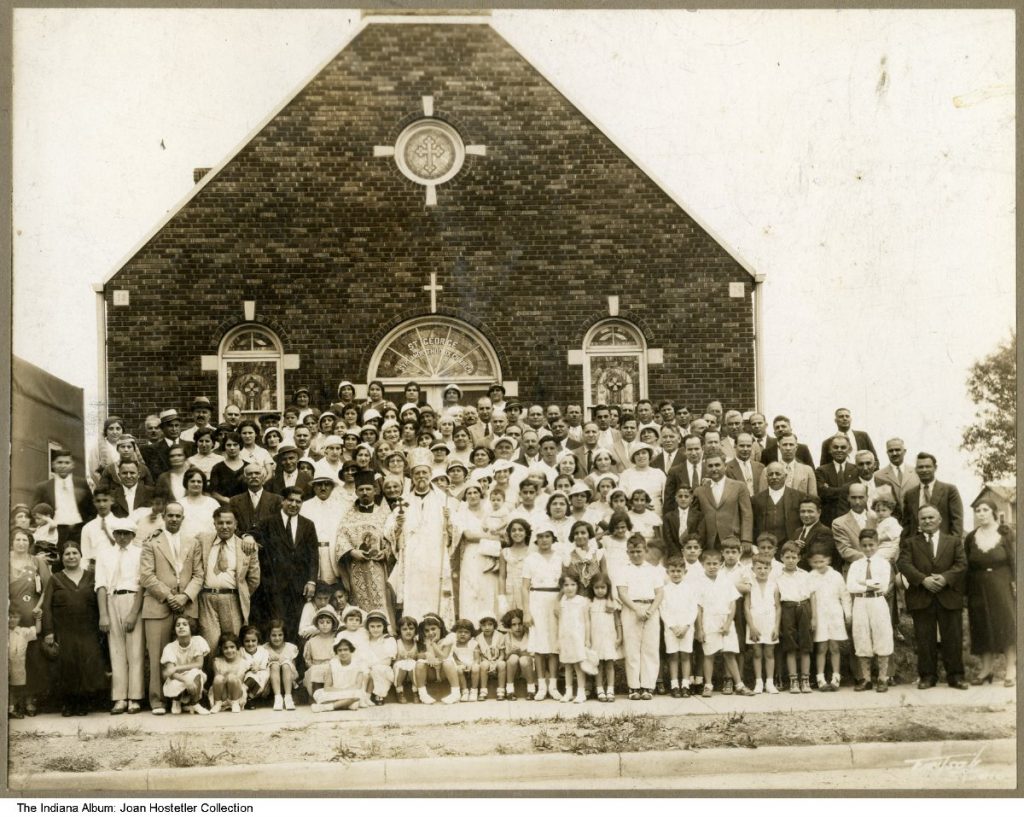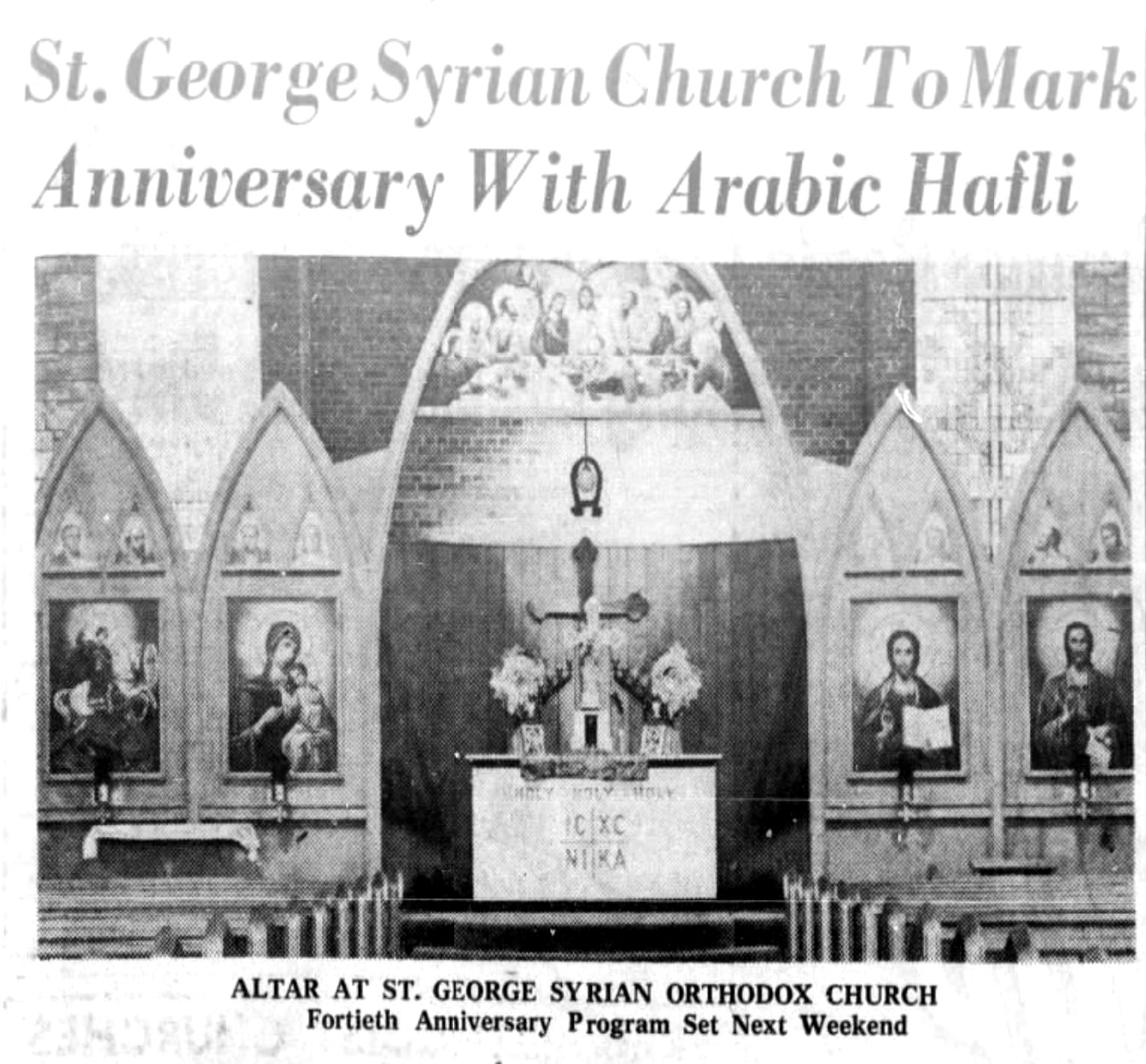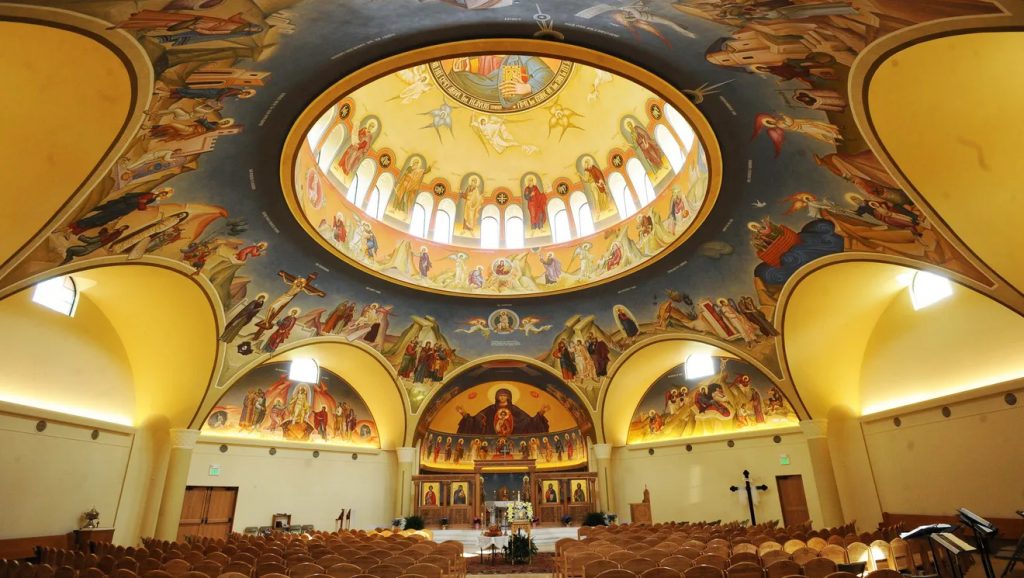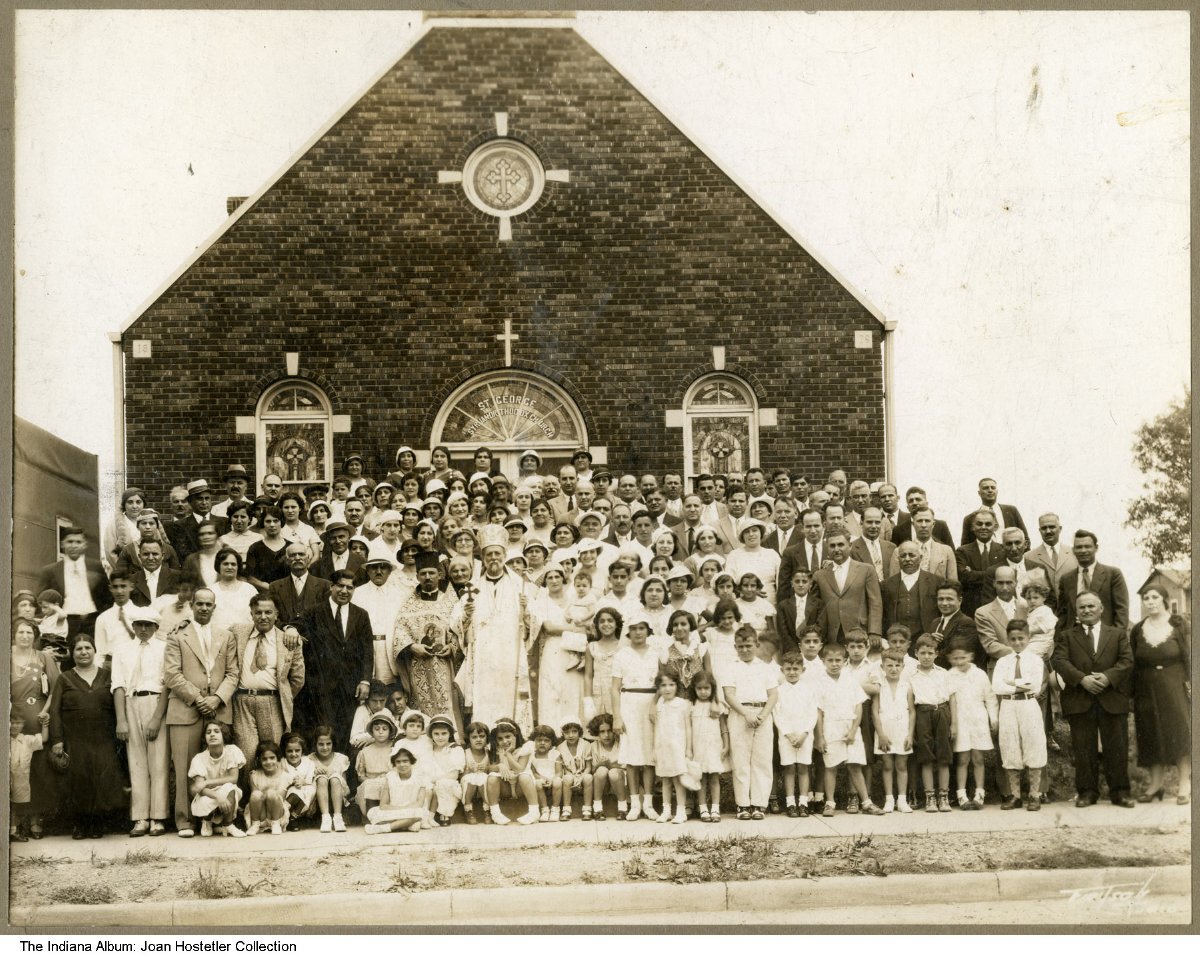The first known Arabic-speaking Orthodox Christians came to central Indiana from Lebanon in 1890. Other Christians from the Middle East followed. The common thread linking these immigrants was a desire to escape religious persecution and find a place to practice their faith. However, Indianapolis lacked an Orthodox church so these early immigrants accepted invitations to use other churches until they could build their own.

The Syrian population of Indianapolis established a Syrian American social club in a building they purchased on North Davidson Street in 1919. While this building served as the social hub for the Syrians, the group still aspired to build a church and establish a permanent parish in Indianapolis.
In 1925, the community started a fundraising campaign to construct a freestanding church. The first-generation Arabic-speaking immigrants and their American-born children needed to raise $15,000 to meet construction costs. The Knights of St. George, formed on February 8, 1925, led the fundraising campaign. The first freestanding church stood at 2745 N. Sherman Drive. It opened on January 26, 1926.
In April 1927, the Syrians officially incorporated their congregation as St. George Syrian Antiochian Church Indianapolis. Antiochian referred to the Syrians’ original church at Antioch, a branch of Orthodox Christianity whose headquarters has been in Damascus, Syria, since the Middle Ages. The new church’s home was in the Brightwood (see ) neighborhood on the near-eastside of Indianapolis.
On March 20, 1932, women in the congregation founded the St. George Ladies’ Aid Society. Its primary role was to sustain the social life of the immigrant community through activities for the adults and the youth. The Aid Society also played a key role in fundraising activities that led to the construction of a fellowship hall needed to accommodate the congregation’s growing community programs. The Knights of St. George Hall opened on land adjacent to the church in June 1935.

Following the construction of the fellowship hall, a young people’s club called the St. George Progressives was formed. The early years of St. George focused on building expansion, improvements, or purchases to accommodate the growing congregation. With the establishment of the St. George Progressives, the congregation’s efforts began to shift toward greater work in ministry, service, and spiritual life. Delegates from the Progressives played an instrumental role in the organization of the Syrian Orthodox Youth Organizations (later called the Society of Orthodox Youth Organizations [SOYO]). The Progressives were charter members of the broader SOYO movement in the denomination, with seven of its members serving as presidents of the Midwest SOYO or National SOYO.
Once again, the parish set up a building fund for future expansion. In 1949, the parish purchased a home on Princeton Place to serve as the parish rectory. In 1956, the parish set its eyes on a 21-acre tract in central Indianapolis as its future home. The new church and social hall were consecrated on September 23, 1962. The social hall was remodeled in time to celebrate the Golden Jubilee of the parish in 1976. By 1987, the parish had outgrown its facilities. Additions to the church included a conference room, a lounge, Sunday School classrooms, and an updated kitchen.

In 1992, SOYO became the Fellowship of St. John the Divine. Its members coordinate outreach programs and spiritual projects for local congregations and more broadly at the regional and archdiocesan level, which covers the United States and Canada. St. George’s membership grew and diversified in the 1990s. Younger people joined the church as did an influx of immigrants from Palestine, Jordan, Eritrea, Ethiopia, and Russia. Converts from other Christian faiths accepted Orthodoxy and added to the membership. To celebrate the changing complexion of its congregation, the church changed its annual fundraising event from a smorgasbord to the Middle Eastern Festival. The event annually draws close to 4,000 guests over two days.
With the continued growth of its parish, St. George embarked on the construction of a 22,000-square-foot, Byzantine-designed structure in the fall of 2012. Parishioners celebrated the opening of their new church in Fishers, Indiana, in May 2014. The $7 million structure modeled after the Hagia Sophia, the religious and spiritual center of the Eastern Orthodox Church in Istanbul, Turkey, serves as the congregation’s third home.

Help improve this entry
Contribute information, offer corrections, suggest images.
You can also recommend new entries related to this topic.





